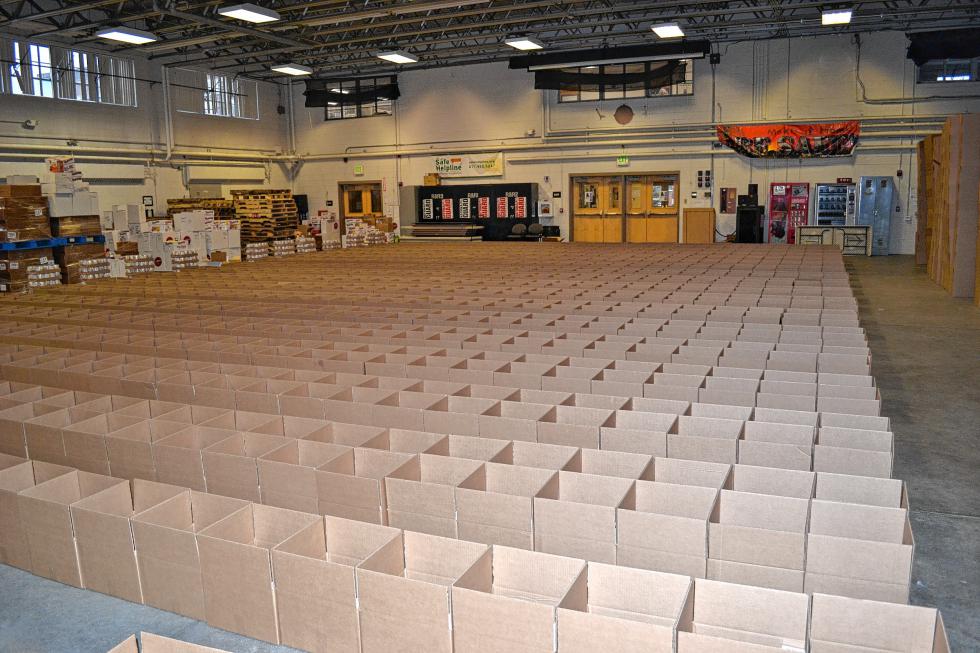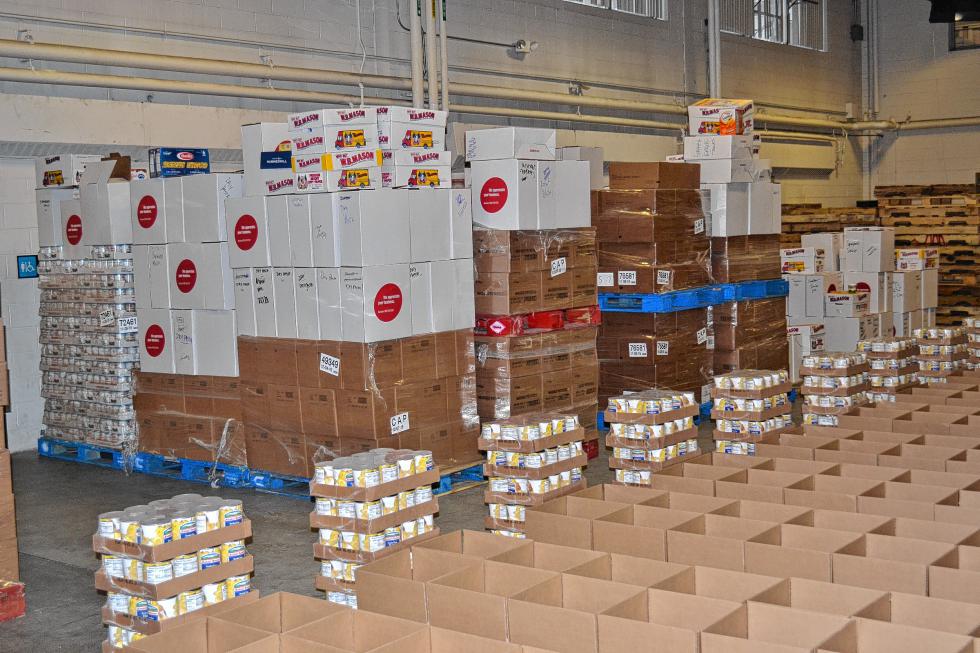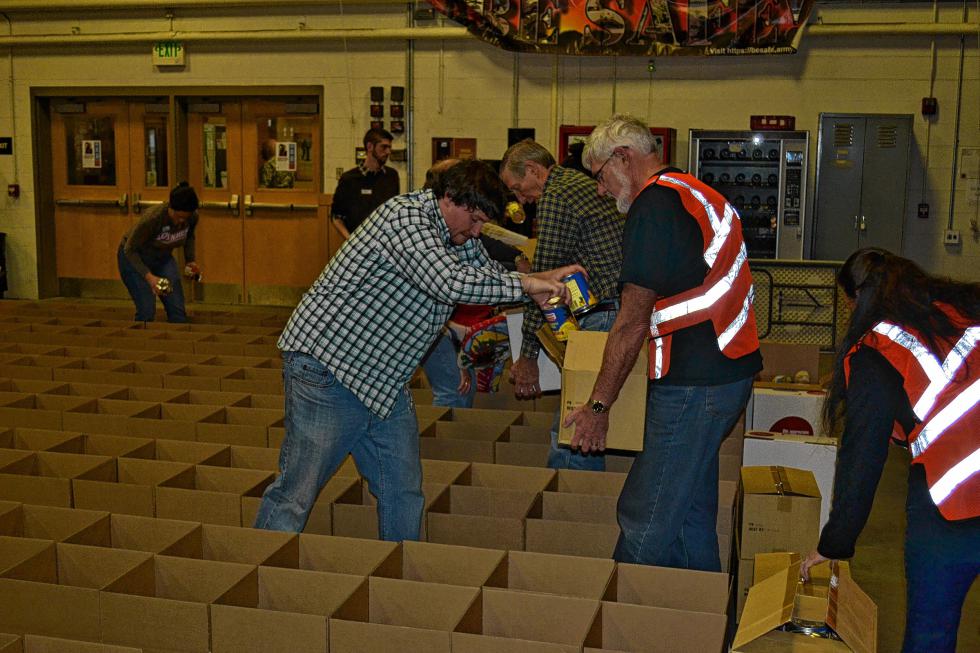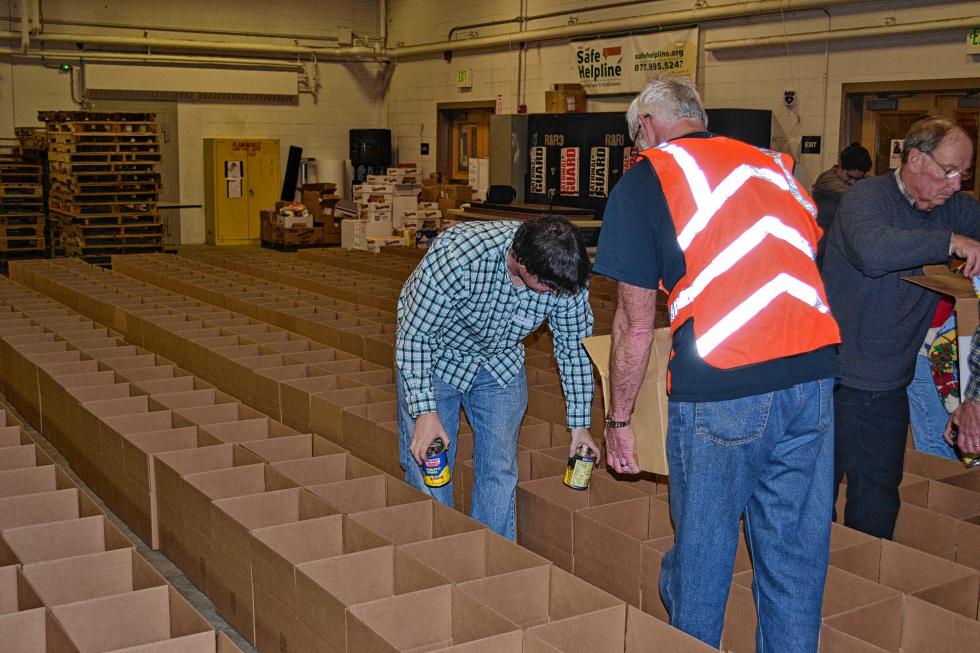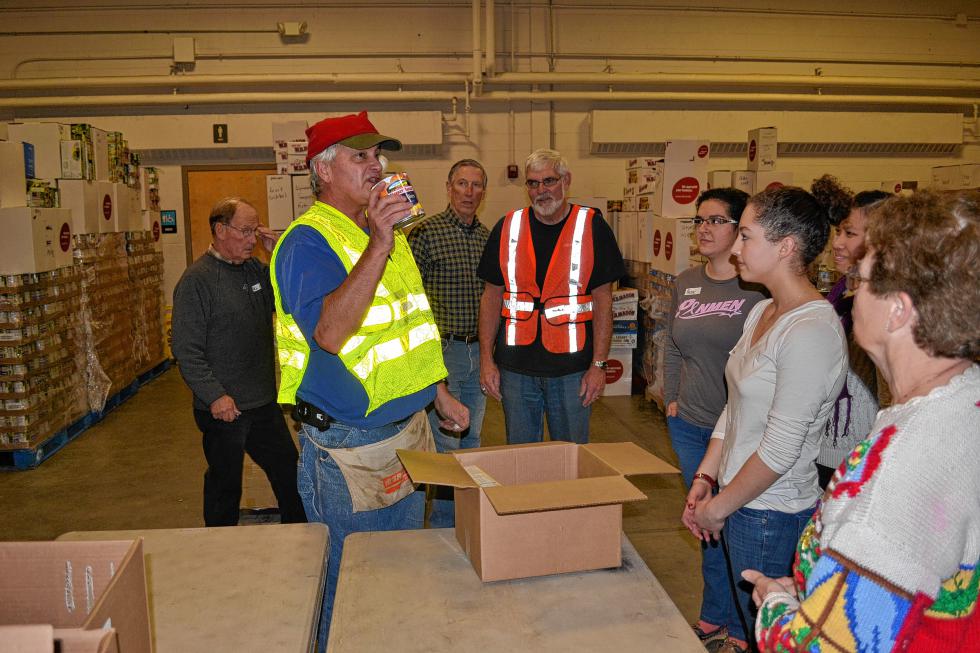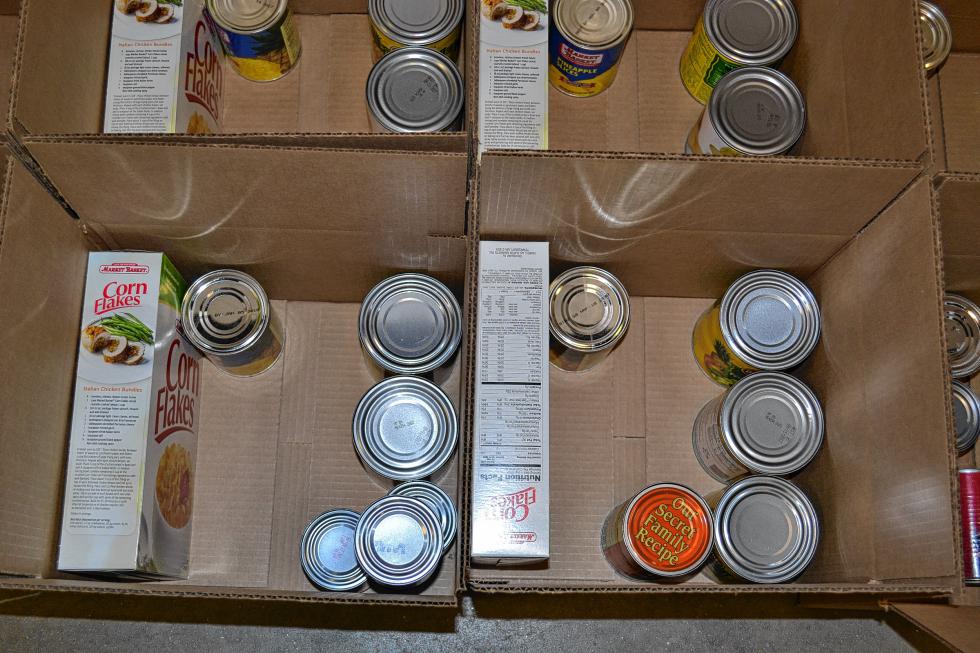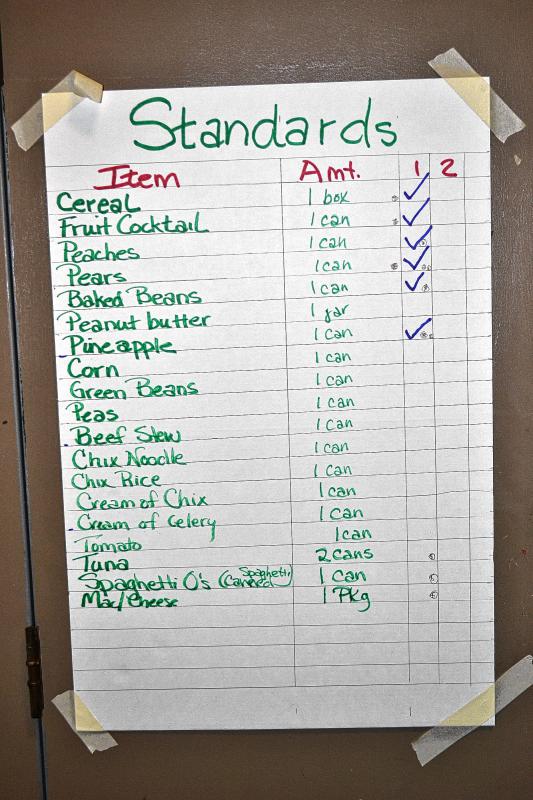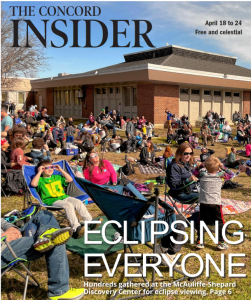When I walked into the N.H. National Guard Armory last week, the sight of more than 1,100 boxes sitting on the concrete floor was a little intimidating. Especially since my directive for the next couple hours was to help fill all of those boxes with nonperishable food items.
Luckily, I wasn’t alone in this endeavor, ’cause if so, I’d probably still be there, sleep deprived and with some pretty sore muscles. Instead, I was part of a group of 15 volunteers who were all there for the same reason – to help with the annual Capital Region Food Program’s Holiday Food Basket Project.
I had seen the production in action last year, but it’s a little different when you’re part of the volunteering crew instead of the guy who takes pictures of all the hard working people.
When I arrived for the 11 a.m. shift on Thursday, I had no idea what I’d be doing. Would there be canned goods to be separated from various local food drives? Would I be filling boxes? Or was there a need to portion out some of the mass quantities of perishable items like potatoes or onions?
Well, I had two choices. Either I could work with a partner and make our way down one of the rows dropping in peaches, pears, pineapple chunks and baked beans or I could take potatoes from a bigger bag and put them in a smaller bag.
Those who didn’t want to carry boxes of canned goods or bend over were instructed to the potato station, but I’m on the younger side of the hill so I figured why not work with the boxes.
The directions were easy to follow since the only thing we really had to do was take a canned good and put it in the designated spot in the box. Simple for sure and something that even I could follow.
I was teamed up with Steve Fisher, one of the shift leaders whose son way back when did his Eagle Scout project to help bring in enough potatoes for the project. Each of the boxes already had cereal and fruit cocktail in them, so we started by adding the pears, like the big honkin’ 29 ounce cans of pears. I backed my way down the row, dropping a can in each box on either side of the row, while Fisher followed with the box. It was actually a pretty good system.
Since my wife is an occupational therapist, she would not have been fond of my technique of placing items in the boxes, but it’s not always easy to remember to bend at the knees. Each row had 33 boxes (except for the last one, which had just six), so each trip meant dropping a canned good in 66 boxes. For each food item, we did about three to four rows, depending on how fast of a pace we and everyone else was moving at.
Before we tackled the next item, we broke down boxes to bring to the dumpster for recycling and removed plastic wrap to put in the regular trash, which is smart ’cause there’s no way we would have wanted to do all of that cleanup at the end of the shift – especially with the delicious smells of lunch coming from the kitchen.
Fisher and I had a nice rhythm going through the pears, pineapple chunks and into the peaches, before a guy by the name of Chris Pappas – you may have heard of him – showed up to help and got the lucky assignment of working with me. Pappas, who’s been volunteering with the holiday basket project for so long that he doesn’t even get assigned a shift anymore and rather just shows up when he feels like it, and I finished off the peaches and had a real strong run through the baked beans before my shift ended (Pappas was there for the day). The crews for the rest of that day and the following day added things like peanut butter, corn and mac and cheese boxes, along with a list of more stuff.
If I had to guess, I’d say I probably put about 600 canned goods in those boxes. A lot of the partners switched off carrying the food and placing it in the box, but I stuck with the filling. Now you might be thinking, “What’s the big deal? You put canned goods in boxes.” Well while that’s true, I look at it as I helped in some small way put food on people’s tables this holiday season. If not for all the volunteers and donations, the approximately 7,000 people in the 18 communities the project serves wouldn’t have all this food, most of whom rely on it for their main food source.
In addition to the boxes I was describing before, which are called the standard boxes and are filled with stuff that can be used at any point, the recipients also get a custom box filled with items for a holiday meal, like potatoes, carrots, onions, apples and a turkey. And even with about 5,000 boxes to fill, it only takes about five days to organize the food and get things ready for distribution.
Between today and tomorrow (Tuesday and Wednesday) the food is distributed to agencies in the area, picked up and delivered to those who need it and can’t come get it themselves. Since this is the 42nd year of the project, they’ve figured out the best way to make sure everyone gets their boxes.
For this year, about 12 tons of food was donated and more than $100,000 was used to purchase what didn’t come in through local food drives.
A lot of the volunteers, like Pappas and Lee Lajoie (the floor supervisor for the standard box operation), have been helping for many years, while others like myself and a handful on my shift were brand new to the project. Although it’s pretty easy to see why people keep coming back.
But don’t forget that the Capital Region Food Program also does year-round distribution as well. Each month they donate food to about 30 local food pantries and social service organizations.
To learn more about CRFP or how to donate, visit capitalregionfoodprogram.org.

